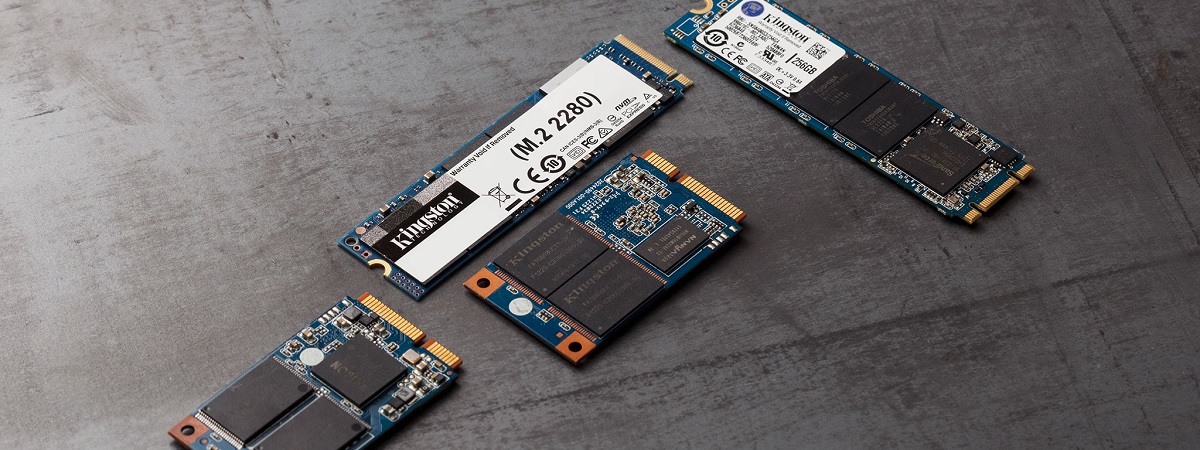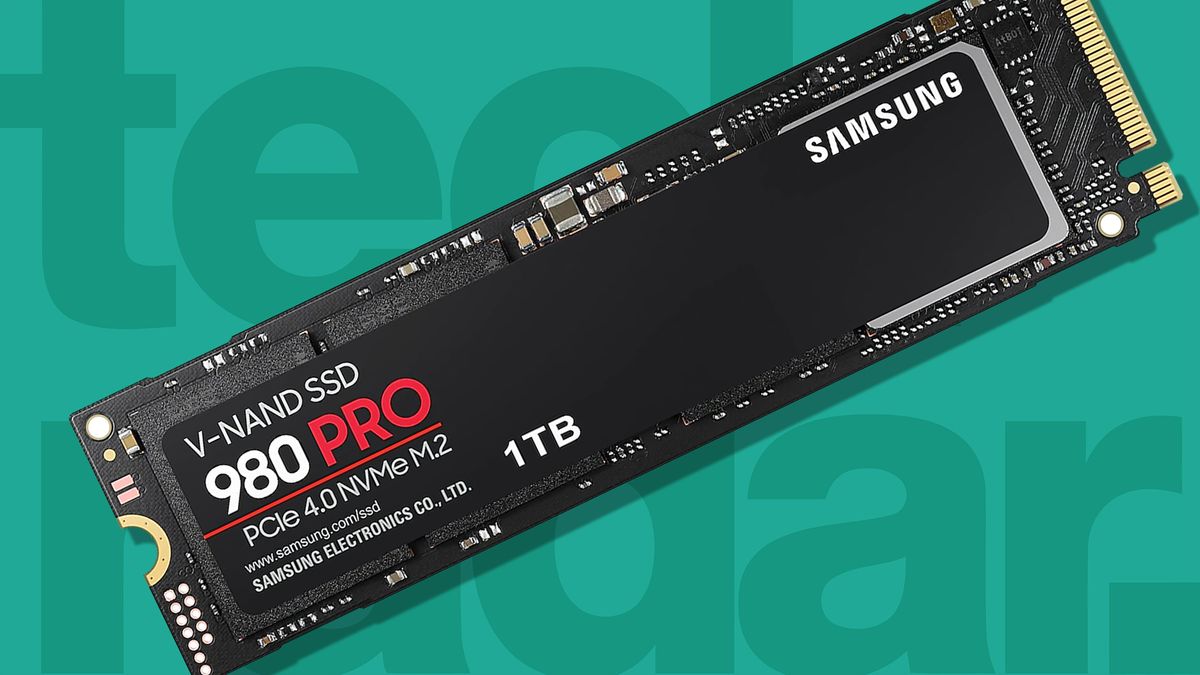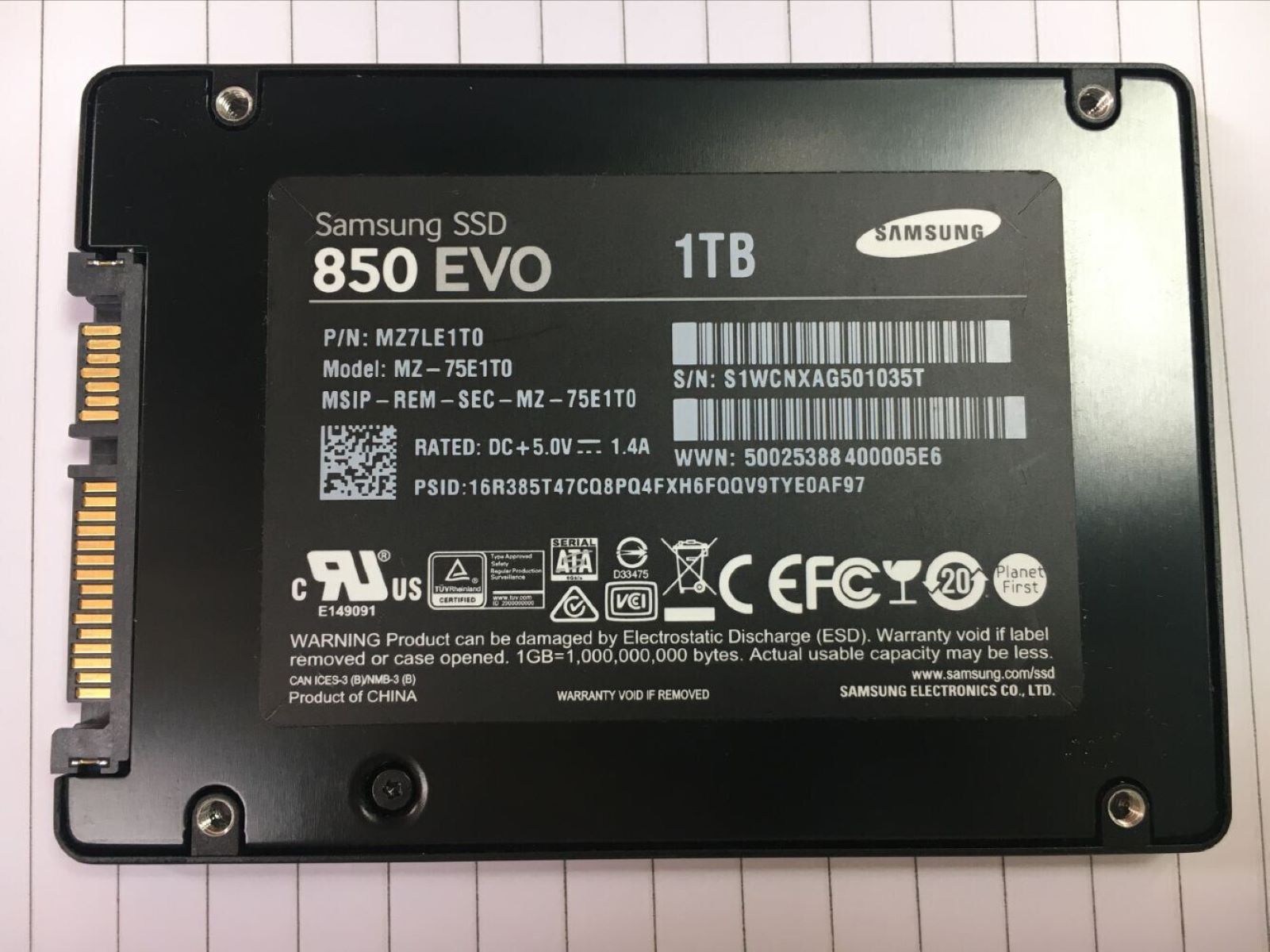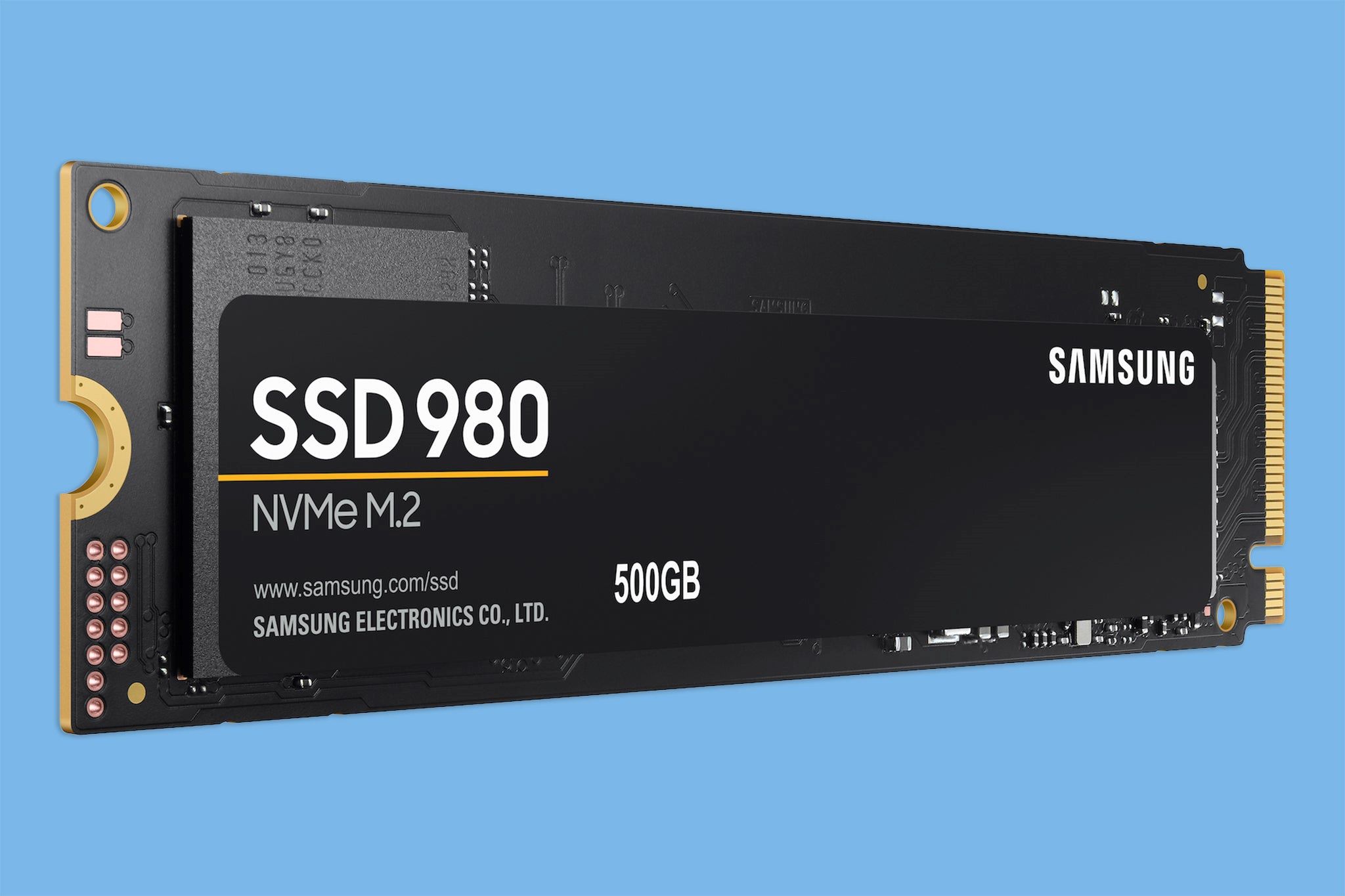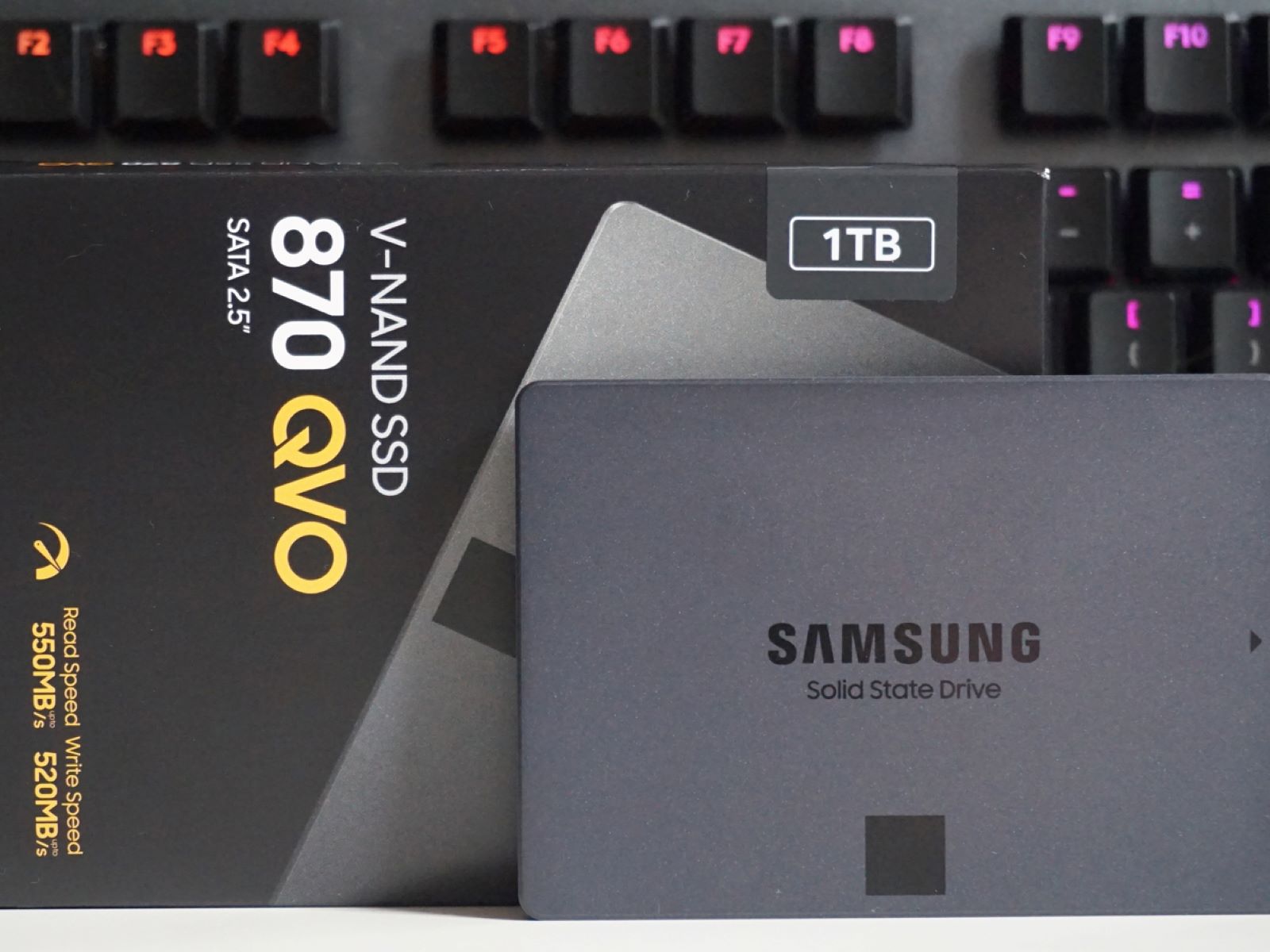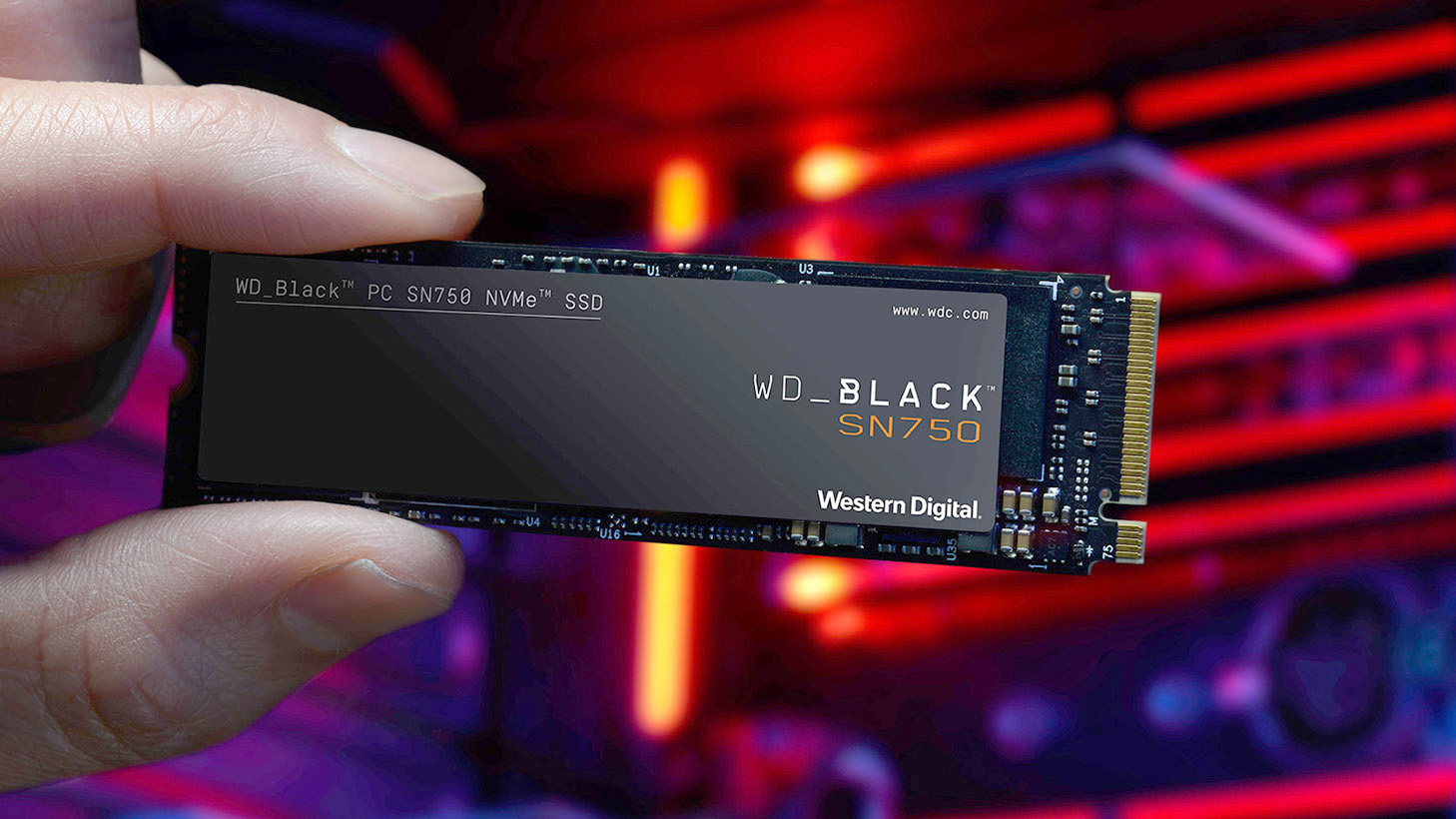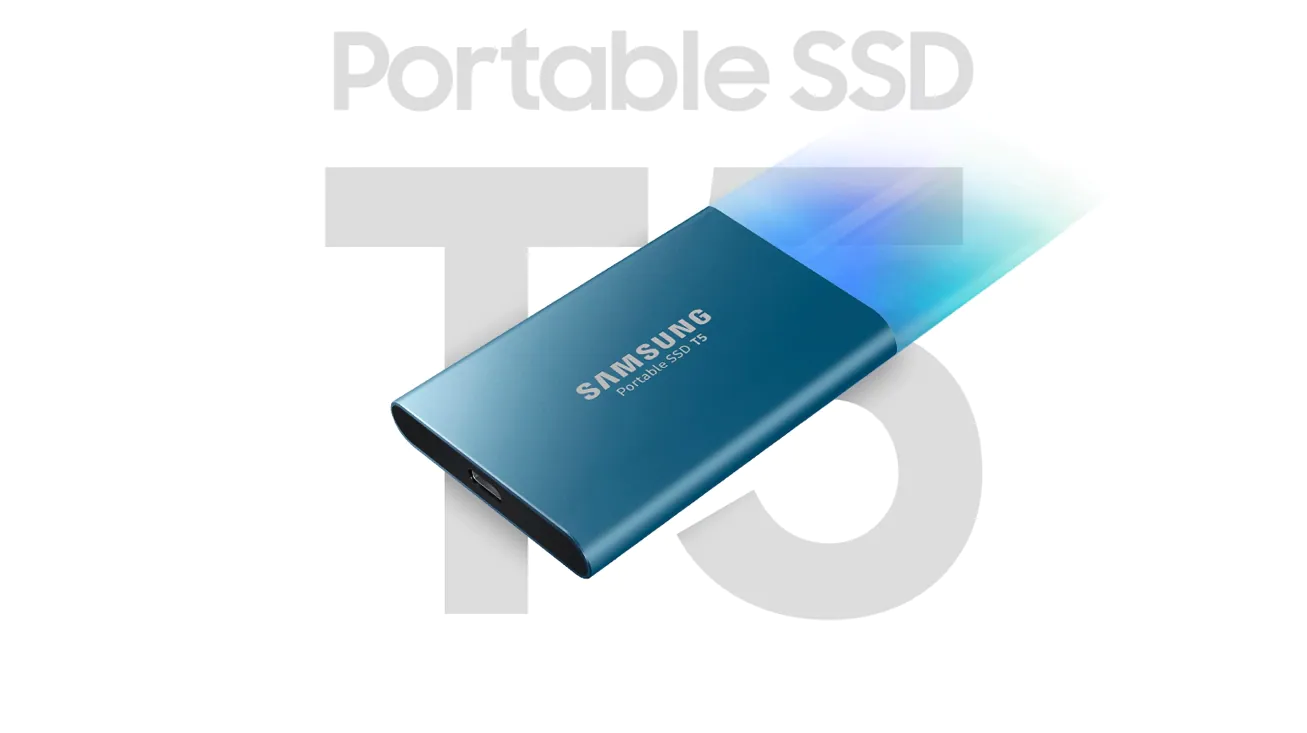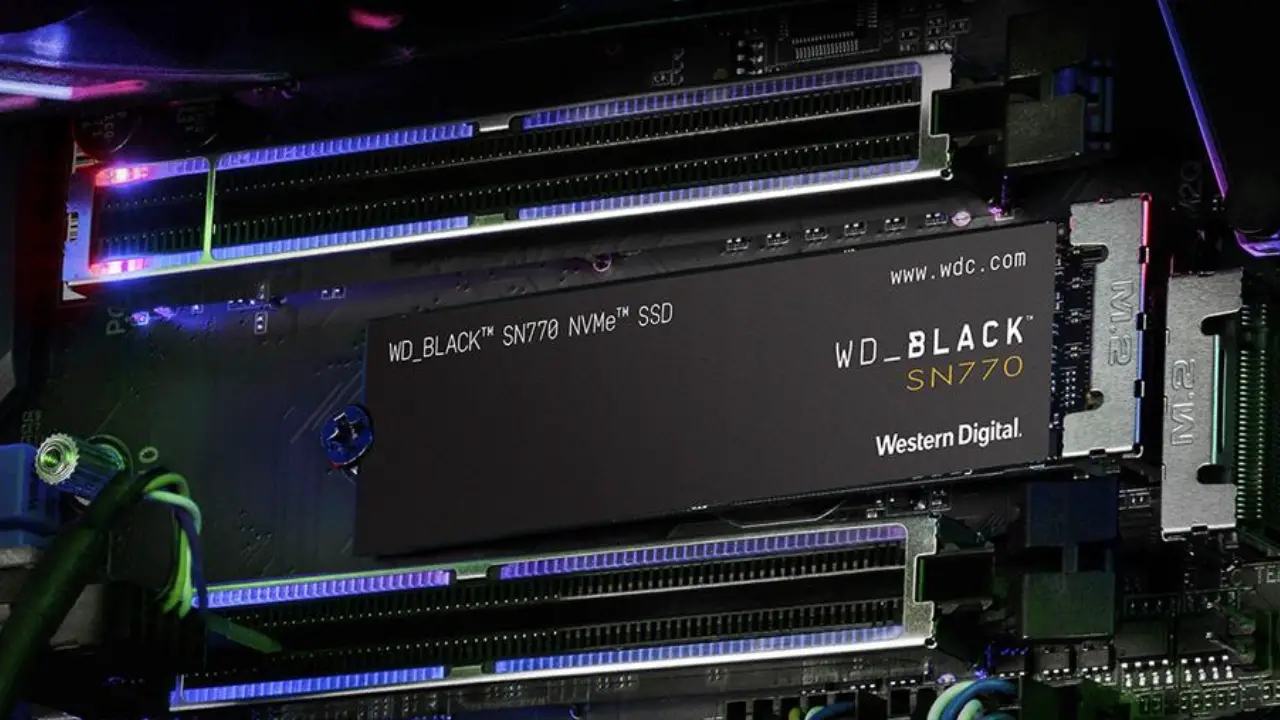Introduction
When it comes to gaming, every millisecond matters. Gamers strive for the best performance, graphics, and overall experience. And one crucial component that can greatly enhance gaming is the solid-state drive (SSD). An SSD offers several advantages over traditional hard drives, ensuring that gamers can enjoy smoother gameplay, faster loading times, and improved overall performance.
Unlike traditional hard drives that rely on spinning disks and moving parts to store and retrieve data, an SSD utilizes flash memory technology. This allows for faster data access, reduced latency, and improved reliability. In this article, we will explore the various ways an SSD can greatly benefit gaming and elevate your gaming experience to new heights.
From improved loading times to enhanced graphics, reduced stuttering and lag, quicker game launching, and even extended lifespan, an SSD is a game-changer for gamers of all levels of expertise. Whether you’re a casual gamer or a professional eSports player, investing in an SSD can make a significant difference in your gaming experience.
In the following sections, we will delve into the specific advantages that an SSD brings to gaming. By understanding these benefits, you can make an informed decision on whether an SSD is worth integrating into your gaming setup. So let’s explore the exciting world of SSDs and discover how they revolutionize gaming!
Improved Loading Times
One of the most frustrating aspects of gaming is waiting for games to load. Whether it’s starting a new game or transitioning between levels, long loading times can significantly dampen the gaming experience. This is where an SSD truly shines. With its lightning-fast data transfer speeds, an SSD can dramatically reduce loading times, allowing you to jump into the action without any delay.
Traditional hard drives rely on mechanical parts to read and write data, which inherently introduces latency and slower performance. On the other hand, SSDs have no moving parts and utilize flash memory technology, allowing for almost instantaneous data access. This means that game assets, such as textures, character models, and environmental elements, can be loaded and rendered faster, resulting in a seamless and immersive gaming experience.
An SSD can lead to significantly shorter loading screens, eliminating the painstaking minutes spent staring at a progress bar. Whether you’re loading a new game for the first time or restarting a level after a failed attempt, an SSD will get you back in the game in the blink of an eye.
Additionally, an SSD can also greatly improve the loading times of open-world and sandbox games. These types of games often require loading large and complex game worlds as you traverse through different areas. With an SSD, the time it takes to load new regions, buildings, and environments is drastically reduced, allowing you to seamlessly explore and interact with the game world without interruptions.
In competitive multiplayer games, quick loading times can give you a competitive edge. You can join matches faster, select your character or loadout swiftly, and be ready for action before your opponents who are still struggling with long loading times. This can make a significant difference in fast-paced games where every second counts.
Overall, an SSD’s improved loading times can save you precious minutes, enhance your immersion, and provide a smoother gaming experience. So if you’re tired of staring at loading screens, an SSD is a worthwhile investment that will greatly improve your gaming experience.
Faster Data Access
In the world of gaming, quick data access is essential for seamless gameplay and smooth performance. An SSD excels in providing faster data access compared to traditional hard drives, resulting in a more responsive and enjoyable gaming experience.
Unlike traditional hard drives that rely on spinning disks and mechanical read/write heads, an SSD utilizes flash memory technology. This allows for near-instantaneous data access as there are no moving parts involved. The data can be retrieved and read from the SSD at incredible speeds, ensuring that game assets, such as textures, audio files, and game code, are accessed without any lag or delay.
With faster data access, an SSD can reduce the time it takes for games to retrieve and load necessary files during gameplay. This means that your gaming experience will be smoother, with less stuttering and lag. You will notice quicker responses to your inputs, allowing for more precise controls and faster reaction times in competitive gaming scenarios.
Additionally, an SSD’s faster data access provides benefits beyond just gameplay. Installing and patching games becomes a breeze with reduced waiting times. Large game files and updates can be transferred to the SSD in a fraction of the time it takes on a traditional hard drive. This means you can spend less time waiting and more time playing.
Moreover, an SSD’s superior data access speed allows for faster asset streaming in games. In open-world games, for example, where the game world loads dynamically as you move around, an SSD can read and load new areas, textures, and objects seamlessly. This eliminates the interruptions caused by slow loading, ensuring a fluid and immersive gaming experience.
The faster data access of an SSD can also benefit other aspects of your gaming setup. If you are a content creator or streamer, an SSD can significantly reduce the time it takes to load video editing software, access large media files, or transfer recorded gameplay footage. This translates to increased productivity and efficiency in post-production tasks.
In summary, an SSD’s faster data access provides numerous advantages for gamers. It minimizes loading times, reduces stuttering and lag, improves control responsiveness, and streamlines game installation and patching. So if you’re looking to elevate your gaming experience with improved data access speeds, investing in an SSD is a choice you won’t regret.
Smoother Performance
When it comes to gaming, performance is paramount. A smoother and more consistent performance can greatly enhance your gaming experience, allowing you to fully immerse yourself in the game without any distractions. An SSD plays a crucial role in achieving this goal by providing faster and more reliable performance compared to traditional hard drives.
One of the key reasons an SSD improves performance is its faster data transfer speeds. The high read and write speeds of an SSD ensure that game files and assets are accessed quickly, reducing loading times and minimizing in-game stuttering and lag. This means that your games will run more smoothly, providing a more immersive and enjoyable experience.
Additionally, an SSD’s faster random access speed makes a significant difference in performance. Random access refers to the time it takes for the drive to locate and retrieve specific data. Traditional hard drives with moving parts are relatively slower in random access compared to SSDs. This means that in games with frequent and rapid data retrieval, such as open-world games or games with large sandbox environments, an SSD shines by providing a smooth gaming experience with minimal performance hiccups.
Furthermore, an SSD’s ability to handle multiple read and write operations simultaneously significantly improves overall system performance. This is especially beneficial for gamers who like to multitask while gaming. With an SSD, you can seamlessly switch between your game, web browser, and other applications without experiencing significant performance degradation. This ensures that your gaming experience remains uninterrupted and lag-free.
Another advantage of an SSD is its resistance to physical damage. Traditional hard drives with spinning disks are more susceptible to damage from shock, impact, or even accidental drops. On the other hand, SSDs have no moving parts, which makes them more robust and less prone to data loss due to physical trauma. This means that your gaming experience is less likely to be disrupted by hardware failures caused by accidental mishaps.
Overall, an SSD’s faster and more reliable performance enhances your gaming experience by reducing loading times, minimizing stuttering and lag, enabling multitasking, and providing improved durability. If you’re looking for a smoother and more consistent gameplay experience, integrating an SSD into your gaming setup is a wise investment.
Reduced Stuttering and Lag
Stuttering and lag can be major nuisances when it comes to gaming. They can disrupt your gameplay, hinder your performance, and ultimately ruin the overall gaming experience. Fortunately, an SSD can help alleviate these issues by significantly reducing stuttering and lag, ensuring a smoother and more enjoyable gaming experience.
One of the reasons an SSD reduces stuttering and lag is its faster data transfer speeds. With traditional hard drives, data retrieval can be slow and inconsistent, leading to a delay in loading game assets. This can result in stuttering, where the game freezes momentarily or experiences choppy frame rates. Conversely, an SSD’s speedy data access ensures that game files are loaded quickly and efficiently, minimizing the occurrence of stuttering.
In online multiplayer games, a slow hard drive can contribute to lag, causing delays in information transmission between the game server and your computer. This delay can result in a poor connection quality, making it difficult to compete effectively in fast-paced games. By using an SSD, the time it takes to load and process incoming and outgoing game data is significantly reduced, reducing the chances of experiencing lag and improving your online gaming performance.
Additionally, an SSD’s faster random access speed plays a crucial role in reducing stuttering and lag. In games where there is a constant need to load and unload assets in real-time, such as open-world games or games with detailed environments, an SSD excels by providing quick and seamless access to required assets. This ensures that the game runs smoothly, without any hitches or sudden frame drops.
Furthermore, SSDs excel in handling simultaneous read and write operations, which is particularly advantageous for gaming. This feature allows the drive to efficiently access and load game data while also saving game progress or performing background tasks. With an SSD, you can experience smoother gameplay even when the game is accessing and storing data in the background, minimizing the impact on overall performance.
Moreover, an SSD’s lower seek time and reduced latency contribute to improved responsiveness. This means that actions you take in the game, such as character movements or weapon firing, are executed more swiftly and accurately. This can be particularly crucial in competitive gaming scenarios where split-second decisions and quick reflexes are key to success.
In summary, an SSD’s ability to reduce stuttering and lag greatly improves the overall gaming experience. By providing faster data transfer speeds, quicker random access, and improved responsiveness, an SSD ensures that your games run smoothly without any frustrating interruptions. If you’re tired of experiencing stuttering and lag during gameplay, upgrading to an SSD is a smart investment that will make a noticeable difference in your gaming performance.
Faster Game Launching
Waiting for games to launch can be a tedious task, especially if you’re eager to dive into the action. Thankfully, an SSD offers a significant advantage in terms of faster game launching speeds, reducing the time you spend waiting and allowing you to jump right into the gaming experience.
Unlike traditional hard drives that have to physically locate and retrieve game files, an SSD accesses data electronically, resulting in near-instantaneous retrieval. When launching a game, the time it takes for the game’s executable file to load into memory is greatly reduced with an SSD. This means that you can launch your games much faster, saving you valuable time and getting you into the gameplay almost immediately.
Additionally, an SSD’s faster read and write speeds enable quicker loading of game assets and resources. When launching a game, various files such as textures, maps, and character models need to be loaded from the storage device into the system’s memory. With an SSD, these files are loaded much faster, allowing the game to be ready for play in a fraction of the time compared to a traditional hard drive.
Faster game launching is particularly beneficial for games that have extensive loading times, such as open-world titles or games with complex levels and environments. These types of games often require the loading of multiple assets and resources as you explore different areas or move between levels. With an SSD, these loading times are significantly reduced, resulting in a more seamless and immersive gaming experience.
Furthermore, an SSD’s faster game launching speed can be a huge advantage in multiplayer gaming. In competitive multiplayer games, where every second counts and quick reactions are essential, being able to launch the game faster means you can join matches and start competing before your opponents who are still waiting for the game to load. This gives you a head-start and a potential edge over your competitors.
Moreover, an SSD’s improved performance in random access ensures that the game’s startup processes, such as initialization and initialization of game libraries and assets, are completed swiftly. This means that the game reaches its playable state much quicker, allowing you to get into the gameplay without unnecessary delays.
In summary, an SSD’s faster game launching speed greatly reduces the time spent waiting for games to load. By minimizing the time it takes to access game files and load assets, an SSD allows you to launch games quickly and jump into the gaming experience without unnecessary delays. Whether you’re eager to start playing or want an edge in multiplayer gaming, upgrading to an SSD is a worthwhile investment that improves your overall gaming efficiency.
Enhanced Game Graphics
One of the key factors that contribute to an immersive gaming experience is the quality of graphics. Gamers want visually stunning and realistic environments, detailed character models, and breathtaking special effects. An SSD can play a significant role in enhancing game graphics, allowing you to fully appreciate the visual beauty of your favorite games.
Traditional hard drives can sometimes struggle to keep up with the demands of modern games, particularly those with high-resolution textures and complex graphics. With slower data transfer speeds, loading these graphical assets can result in longer loading times and compromised performance. On the other hand, an SSD’s fast read speeds ensure that large textures and graphics are quickly loaded into the game’s memory, reducing loading times and enabling a more seamless graphical experience.
Furthermore, an SSD’s faster random access speed enhances the rendering of game graphics. With quick access to game assets, such as texture files and 3D models, an SSD can contribute to smoother and more fluid visual rendering. This means that objects, environments, and characters are displayed in a more realistic and lifelike manner, enhancing the overall immersion and enjoyment of the game.
In addition to improved texture loading, an SSD can also enhance the rendering of dynamic lighting, shadows, and particle effects. These graphical elements can be demanding on storage devices, requiring quick access to relevant data to render them accurately. By providing faster data access and retrieval, an SSD ensures that these effects are rendered seamlessly, enriching the visual experience and adding depth and realism to the game world.
Moreover, an SSD’s improved performance in data access can reduce texture and object pop-in, a common issue in open-world games. Texture and object pop-in occur when objects or textures suddenly appear in the game world as you move around. With an SSD, the time it takes to load and display these assets is significantly reduced, resulting in a smoother transition and a more immersive visual experience.
Furthermore, an SSD’s higher reliability in data retrieval ensures that game graphics remain consistent and artifact-free. Traditional hard drives, with their moving parts, can sometimes introduce small signs of data corruption or artifacts in graphical assets. An SSD’s flash memory technology eliminates these issues, providing a more stable and reliable experience when it comes to rendering game graphics.
In summary, an SSD’s fast data access and retrieval speed greatly enhances game graphics. By reducing loading times, improving rendering performance, and minimizing texture and object pop-in, an SSD allows you to experience games with stunning visual fidelity. Whether it’s exploring breathtaking landscapes or engaging in intense battles with detailed character models, an SSD helps you appreciate the beauty and artistry of game graphics. So if you’re seeking a visually enhanced gaming experience, upgrading to an SSD is a worthwhile investment.
Reduced Power Consumption
Energy efficiency is an important consideration for gamers, not only for environmental reasons but also for the overall cost of running a gaming setup. An SSD offers a significant advantage in terms of reduced power consumption compared to traditional hard drives, making it an appealing choice for energy-conscious gamers.
Traditional hard drives require spinning disks and mechanical read/write heads that consume a considerable amount of power, particularly during heavy disk activity or when seeking data. In contrast, an SSD utilizes flash memory technology, which requires significantly less power to operate. This means that an SSD consumes less energy, resulting in lower power consumption and reduced heat generation.
Lower power consumption has several benefits for gamers. First, it contributes to a more energy-efficient gaming setup, reducing your environmental impact and carbon footprint. If you’re conscious about sustainability and want to minimize your energy usage, an SSD is an excellent choice as it consumes less power during both idle and active states.
Additionally, reduced power consumption means lower electricity bills. By upgrading to an SSD, you can save money in the long run as you’ll be drawing less power from your system during gaming sessions. This is particularly beneficial for gamers who spend extended periods playing games, as the cumulative energy savings can be significant over time.
Moreover, an SSD produces less heat compared to traditional hard drives, which can help maintain optimal operating temperatures within your gaming system. Excessive heat can lead to thermal throttling, affecting performance and potentially causing hardware issues. By reducing power consumption and heat generation, an SSD contributes to a cooler and more stable gaming environment, improving overall system longevity.
Furthermore, reduced power consumption can also have a positive impact on system noise levels. Traditional hard drives, with their moving parts, tend to produce more noise during operation. Upgrading to an SSD reduces power requirements and eliminates mechanical components, resulting in a quieter gaming experience. This is particularly beneficial for gamers who prioritize a quiet and peaceful gaming environment.
Overall, an SSD’s reduced power consumption offers energy efficiency, cost savings, improved heat dissipation, and a quieter gaming experience. By opting for an SSD, you can enjoy your favorite games while minimizing your environmental impact, reducing electricity bills, and maintaining optimal system performance. If you’re looking to build an energy-efficient gaming setup, upgrading to an SSD is a smart investment that pays off in the long run.
Extended Lifespan
When investing in gaming hardware, it’s essential to consider the lifespan of the components. An SSD offers a longer lifespan compared to traditional hard drives, making it a reliable and durable storage solution for gamers.
Traditional hard drives consist of spinning disks and moving read/write heads that are prone to mechanical failures over time. The constant movement and high-speed rotations can result in wear and tear, which can eventually lead to mechanical failures and data loss. In contrast, SSDs have no moving parts, making them more resistant to mechanical failures and increasing their overall lifespan.
An SSD’s lack of moving parts also contributes to its resilience against physical shocks and impacts. Traditional hard drives can be susceptible to damage and data loss if subjected to physical trauma, such as accidental drops or bumps. Alternatively, an SSD is more robust and can withstand such impacts, ensuring that your gaming data remains intact even in the face of unexpected mishaps.
Furthermore, the inherent design of SSDs, specifically their utilization of flash memory technology, allows for a significantly higher number of read and write cycles compared to traditional hard drives. Each time data is written or erased on a storage device, it contributes to the wear and tear of the hardware. With their higher endurance levels, SSDs can handle a larger number of read and write operations, resulting in an extended lifespan.
It’s important to note that an SSD’s lifespan can be affected by various factors, including the type of NAND flash memory used, the controller technology, and the overall usage of the drive. However, under typical gaming usage scenarios, an SSD can last several years before exhibiting any signs of degradation. Additionally, modern SSDs often feature technologies like wear-leveling and over-provisioning, which help distribute data writes and extend the lifespan of the drive.
Another factor that contributes to the extended lifespan of an SSD is its better resistance to software-related issues. Traditional hard drives can experience issues like bad sectors, file corruption, and data fragmentation, which can negatively impact performance and lifespan. SSDs are less susceptible to these problems, resulting in a more reliable and long-lasting storage solution for your gaming needs.
In summary, an SSD’s lack of moving parts, durability against physical shocks, higher endurance levels, and resistance to software-related issues contribute to its extended lifespan compared to traditional hard drives. Upgrading to an SSD ensures that your gaming data remains secure, and your gaming system performs optimally for a longer period. So if you’re looking for a storage solution that offers longevity and reliability, an SSD is a wise investment that will serve you well throughout your gaming journey.
Conclusion
Undoubtedly, an SSD brings numerous advantages to the world of gaming. Whether you’re a casual gamer or a dedicated enthusiast, integrating an SSD into your gaming setup can greatly enhance your gaming experience and take it to the next level.
With faster loading times, smoother performance, reduced stuttering and lag, quicker game launching, enhanced graphics, lower power consumption, and an extended lifespan, an SSD offers substantial benefits that impact every aspect of gaming. These advantages result from the inherent design of SSDs, which utilize flash memory technology, eliminate mechanical moving parts, and provide faster data access and retrieval speeds.
An SSD’s fast data transfer speeds ensure that games load quickly, minimizing waiting times and maximizing your gaming time. By reducing stuttering and lag, an SSD delivers smoother gameplay and allows for more precise control inputs. Faster game launching gets you into the action swiftly, minimizing downtime and maximizing your gaming enjoyment.
Additionally, SSDs enhance game graphics by providing faster access to textures, improving rendering performance, and reducing pop-in and artifact issues. Reduced power consumption not only benefits the environment but also lowers electricity bills and contributes to a cooler and quieter gaming environment. And with an extended lifespan, SSDs offer durability and reliability, providing peace of mind and a solid investment for your gaming needs.
When considering an SSD for your gaming system, be sure to choose a drive with sufficient capacity to accommodate your game library and ensure optimal performance. Additionally, consider factors such as endurance ratings, controller technology, and warranty coverage to make an informed decision that best suits your gaming requirements.
In conclusion, an SSD is a valuable addition to any gaming setup. Its multitude of benefits, from improved loading times to enhanced graphics, make gaming more immersive, fluid, and enjoyable. Whether you’re looking to level up your gaming performance or simply want a seamless gaming experience, upgrading to an SSD is a decision that will undoubtedly enhance your gaming adventures.







